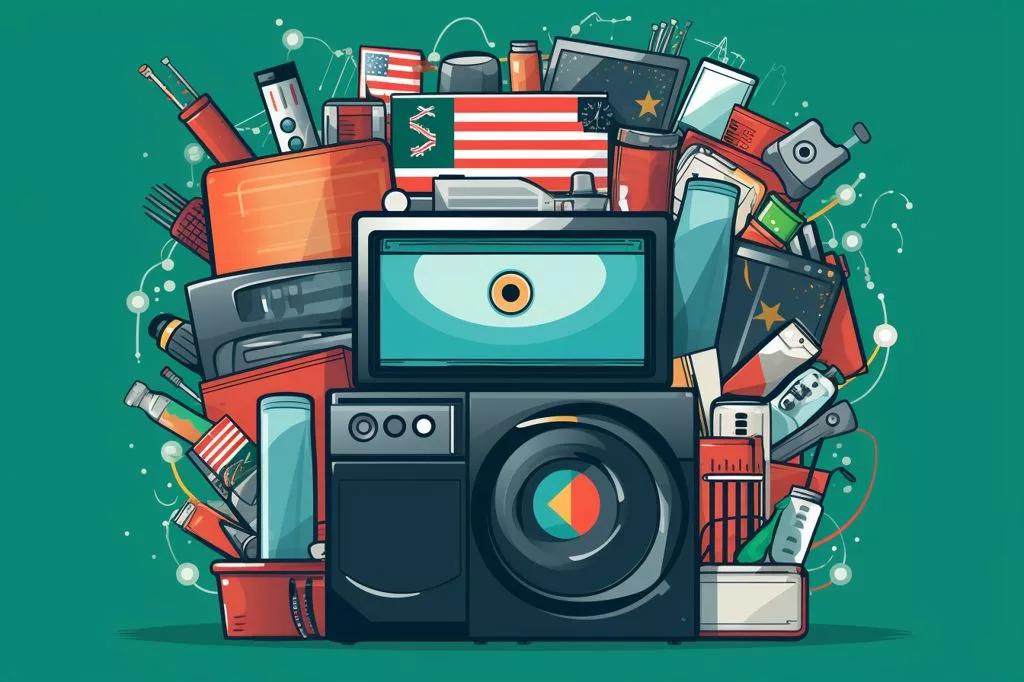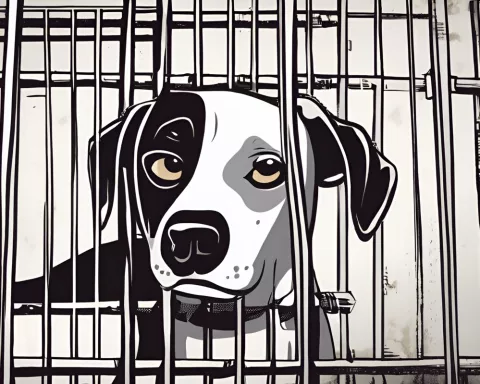This article highlights the changes in South Africa’s digital landscape, specifically the rise of household technologies such as cellphones, televisions, and the internet. There has been a significant increase in cellphone ownership, with 92.1% of households owning a functional cellphone in 2022. The article also notes the decline in traditional technologies, such as household radios and landline telephones. Additionally, the housing and migration trends in South Africa have shifted alongside technological advancements. These changes have contributed to greater internet accessibility and will continue to shape South Africa’s digital revolution.
What are the household technology trends in South Africa?
South Africa has seen a rapid expansion in cellphone ownership, with 92.1% of households owning a functional cellphone in 2022. Television ownership has also increased to 79%, while refrigerator or freezer ownership has climbed to 83.2%. On the other hand, household radios have declined to 50.3%, and landline telephones have seen a downward trajectory. The rise in internet accessibility is attributed to the widespread adoption of cellphones, with 60.5% of households accessing the internet primarily via mobile devices.
A New Era of Communication and Entertainment
In the past two decades, South Africa’s digital landscape has witnessed a massive transformation, marked by the widespread adoption of modern household technologies. A majority of homes now boast televisions, refrigerators, and cellphones. This article delves into these impressive shifts, examining the exponential growth in cellphone ownership, the rising accessibility of the internet, and the transition from conventional radios and landlines to newer alternatives.
Cellphone ownership has experienced a meteoric rise in South Africa. According to Statistician-General Risenga Maluleke, a mere 3.3% of households owned a functional cellphone in 2001. Fast forward to 2022, and that number has soared to an astonishing 92.1%. This rapid expansion has been accompanied by remarkable advancements in communication services, which have, in turn, contributed to greater internet accessibility.
Television ownership has also seen a remarkable surge, with 79% of households owning a television in 2022, compared to 52.6% in 2001. Moreover, refrigerator or freezer ownership has climbed from 53.8% in 2001 to 83.2% in 2022. These trends reflect South Africa’s overall progress, as its citizens embrace cutting-edge technologies and reap the benefits of digital innovation.
Changing Tides: The Decline of Traditional Technologies
While some technologies have thrived, others have not enjoyed the same success. The ownership of household radios has experienced a considerable downturn, plummeting from 73% in 2001 to 50.3% in 2022. This decline can be attributed to the rising prevalence of alternative media sources, such as television and the internet.
Landline telephones have also seen a downward trajectory, as households increasingly embrace cellphones as their primary mode of communication. This shift away from landlines underscores the evolving preferences of South African households, as they prioritize convenience and mobility above traditional means of communication.
Housing and Migration Trends Amid Technological Advancements
South Africa’s housing landscape has also undergone significant changes, with a marked increase in formal dwellings, including brick and concrete structures, flats, and townhouses, among others. The percentage of households residing in formal dwellings has surged from 65.1% in 1996 to 88.5% in 2022. In tandem, the proportion of households in informal dwellings has halved, dropping from 16.2% in 1996 to 8.1% in 2022.
Data from Census 2022 offers insights into home ownership trends and government-subsidized housing. In 2022, 41.6% of dwellings were owned and fully paid off, 25.6% were occupied rent-free, and 23.2% were rented. Only 6.6% of households lived in dwellings that were owned but not fully paid off, a decrease from 11.8% in 2011.
Regarding government-subsidized housing, also known as RDP housing, the highest proportions were found in the Northern Cape (40%) and the Free State (37.6%). Limpopo recorded the lowest proportion at 18.3%, well below the national average of 29.9%.
Internet Access and Migration Patterns
Internet access for South African households has followed a steady upward trajectory from 2011 to 2022. Maluleke highlights that this progress can be attributed to rapid advancements in communication services, particularly the widespread adoption of cellphones. In 2022, only 21.1% of households reported having no internet access, a dramatic decrease from 64.8% in 2011. Furthermore, 60.5% of households accessed the internet primarily via cellphones or other mobile devices in 2022, compared to a mere 16.3% in 2011.
The Census 2022 data also reveals migration patterns and the population of individuals born outside South Africa. An increase in the number of immigrants was observed, particularly among males aged 20 to 44 years. The top five sending countries remained consistent between the 2011 and 2022 censuses, with Zimbabwe, Mozambique, Lesotho, Malawi, and the United Kingdom leading the way.
South Africa’s digital landscape has undergone a significant transformation, with the majority of households adopting modern technologies like cellphones, televisions, and the internet. As the nation continues to progress, these trends are likely to persist, further shaping the technological landscape and driving an ongoing digital revolution.
1. What are the household technology trends in South Africa?
South Africa has seen a rapid expansion in cellphone ownership, with 92.1% of households owning a functional cellphone in 2022. Television ownership has also increased to 79%, while refrigerator or freezer ownership has climbed to 83.2%. On the other hand, household radios have declined to 50.3%, and landline telephones have seen a downward trajectory. The rise in internet accessibility is attributed to the widespread adoption of cellphones, with 60.5% of households accessing the internet primarily via mobile devices.
2. What has contributed to the rise in internet accessibility in South Africa?
The rise in internet accessibility is attributed to the widespread adoption of cellphones, with 60.5% of households accessing the internet primarily via mobile devices. The rapid expansion in cellphone ownership has been accompanied by remarkable advancements in communication services, which have, in turn, contributed to greater internet accessibility.
3. How has the ownership of household radios changed over time in South Africa?
The ownership of household radios has experienced a considerable downturn in South Africa, plummeting from 73% in 2001 to 50.3% in 2022. This decline can be attributed to the rising prevalence of alternative media sources, such as television and the internet.
4. How have landline telephones been affected by the rise of cellphones in South Africa?
As households increasingly embrace cellphones as their primary mode of communication, landline telephones have seen a downward trajectory in South Africa. This shift away from landlines underscores the evolving preferences of South African households, as they prioritize convenience and mobility above traditional means of communication.
5. How has housing and migration changed alongside technological advancements in South Africa?
South Africa’s housing landscape has undergone significant changes, with a marked increase in formal dwellings, including brick and concrete structures, flats, and townhouses, among others. The proportion of households residing in formal dwellings has surged from 65.1% in 1996 to 88.5% in 2022. In tandem, the proportion of households in informal dwellings has halved, dropping from 16.2% in 1996 to 8.1% in 2022. The Census 2022 data also reveals migration patterns and the population of individuals born outside South Africa.
6. How has internet access changed over time in South Africa?
Internet access for South African households has followed a steady upward trajectory from 2011 to 2022. In 2022, only 21.1% of households reported having no internet access, a dramatic decrease from 64.8% in 2011. Furthermore, 60.5% of households accessed the internet primarily via cellphones or other mobile devices in 2022, compared to a mere 16.3% in 2011.
7. What are the trends in ownership of household appliances in South Africa?
Refrigerator or freezer ownership has climbed from 53.8% in 2001 to 83.2% in 2022. Television ownership has also seen a remarkable surge, with 79% of households owning a television in 2022, compared to 52.6% in 2001.
8. What is the significance of the digital revolution in South Africa?
As South Africa continues to progress, the trends in household technologies are likely to persist, further shaping the technological landscape and driving an ongoing digital revolution. The rise in internet accessibility has the potential to revolutionize industries such as education, healthcare, and finance. The digital revolution in South Africa has the power to connect individuals and communities, bridge the digital divide, and drive economic growth.








